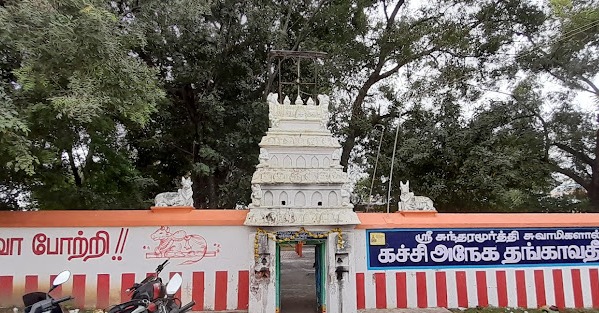Origin/History :-
- The temple dates back to the 7th–8th century CE, preceding the Sri Kailasanathar Temple built by Pallava King Narasimhavarman II (Rajasimha) during 698–728 CE.
- The Kumbhabhishekam (consecration ceremony) was performed.
- The Moolavar Vimanam, Naalvar Sannidhi, Ganapathi Sannidhi, and Sri Valli Devasena Subramaniar Sannidhi were constructed.
- An arch was built near the main road leading to the temple.
- The mini Rajagopuram at the entrance was retained in its original form.
- The 34th year of Kulothunga Chozha I’s reign records a gift of 2 veli of land at Kanchipuram, north of Rajasimeswaram.
- The 20th year of Kulothunga Chozha I’s reign records a gift of 3 veli of land in Thamar Village (now Damal), historically Niththavonothanallur.
- An inscription from the Nala year records a gift of 1400 Kuzhi of land to the Kaikolar (weaving) community by the temple’s official committee.
Puranic Significance :-
- According to legend, Vinayaka (Lord Ganesha), the son of Lord Shiva, established Anegabeswarar in the form of a Lingam (iconic representation of Lord Shiva).
- Anegabeswarar is believed to have killed the demon Kesi, the king of Iraniyapura, and arranged for the marriage of Kesi's daughter, Vallabai, with Vinayaka.
- Kubera, the king of wealth, is also said to have worshipped Anegabeswarar at this temple.
- There are two Anegathangavadham temples—one in the North and the other in the South. This temple is specifically referred to as Kachi Anegathangavadham to distinguish it from the northern shrine.
- The name "Anekapa" is believed to have originated from the word "elephant", as elephants drink water using both their trunk and mouth. It is also believed that an elephant worshipped the deity, adding to the temple's significance.
